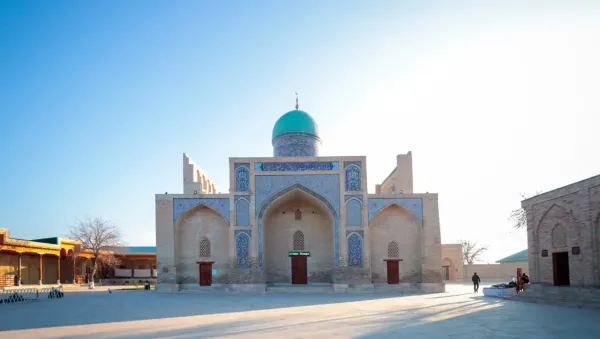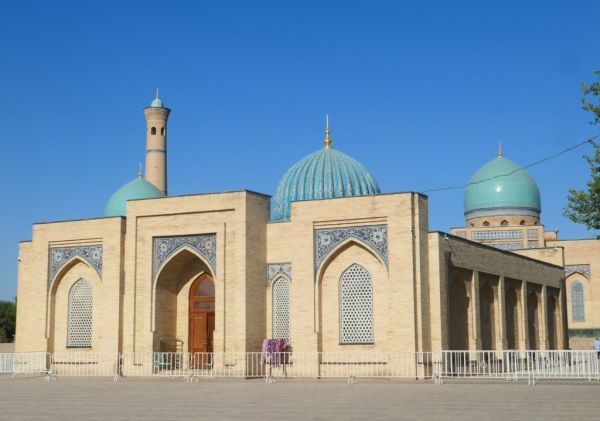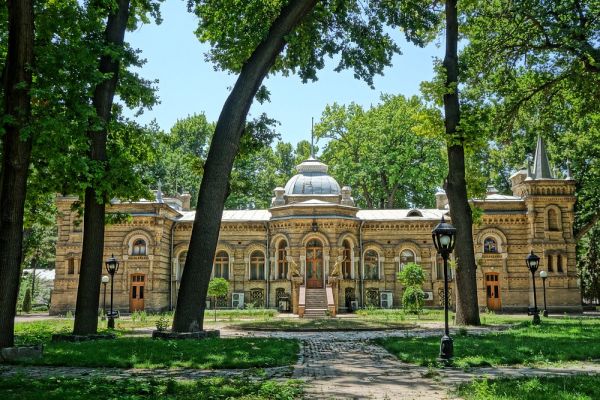The Mausoleum of Qasim Sheikh
The mausoleum of Kassym-Sheikh is located in Navoi, formerly known as Karmana. This facility includes a mosque, a khanaka (pilgrimage site) and two external tombs (now).
The construction of the mausoleum of Kassym-Sheikh began in 1571. Kassym-Sheikh Azizan Karminagi (1500-1578/79), an outstanding religious and political figure in Central Asia, was the leader of the Yasawi Sufi order. He was known for his peacemaking efforts during the violent internal power struggles in Transoxiana. Kassym-Sheikh played a crucial role in helping the future ruler Abdullah Khan II (1557-1598, Khan of all Uzbeks since 1583) in battles against the combined forces of Samarkand, Tashkent and Turkestan. He also participated in the defense of the fortress, protecting the royal family and its servants.
Kasim Sheikh died in 1579 under mysterious circumstances and was buried in the center of Khazira. There is a large marble dakhma (funerary monument) above his grave it was erected. Historical records indicate that the first structure on the site of the mausoleum was built by Kasim Sheikh himself, which served as a madrasah, and later as a mosque (namazgoh) for mass prayers during Ramadan and Eid al-Adha.
Years later, Abdullah Khan II visited the burial site of Kassym-Sheikh, held memorial services and initiated the construction of a khanaka next to the khazira. This place became revered by the pilgrims and followers of Kassym-Sheikh, who were also buried nearby.
By the end of the 16th century, a mosque was built using baked bricks, a common building material of that period. The mosque has a square shape topped by a large dome. Its architectural design includes three facades with vaulted portals typical of medieval Islamic architecture. The central facade of the mosque has a high portal with intricate arches and Arabic inscriptions. The dome is mounted on a drum and decorated with turquoise majolica. Inside, the walls, columns and portals of the mosque are decorated with white carved plaster ornaments.
In 1910, the last ruler of the Emirate of Bukhara, Abd al-Ahad (born in 1885), died and was buried near the mausoleum of Kassym-Sheikh. Initially, he was buried in a brick sagan to the west of Kasym-sheikh's hazira, and then his burial place was marked with a marble dahma. During the construction, the courtyard of the ensemble was expanded, and additional elements such as the niche of the mihrab and the entrances to the chambers were built on the main facade of the hazira Abd al-Ahad. A stone courtyard capable of accommodating up to 2,000 people was also built south of the mosque.
Today, the complex of the mausoleum of Kassym-Sheikh includes a museum with a collection of 2,000 exhibits, a place for ritual meals (ehsonkhana), the residence of the imam and a small orchard.















